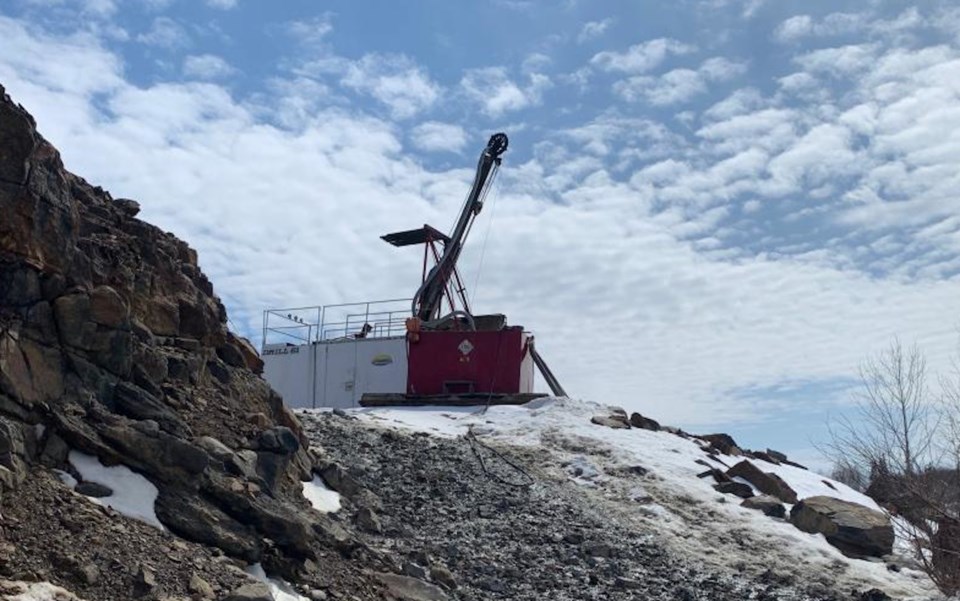The global nickel price is slumping but Magna Mining isn’t breaking stride in making progress to bring two former Sudbury mines back into production.
Magna Mining will be running two winter drilling programs at its Crean Hill and Shakespeare properties at the outset of what the local company anticipates will be an exciting year to make new discoveries on these brownfield properties.
With more than $15 million banked, Magna plans to do 25,000 metres of drilling this year, most of it at Crean Hill, a former INCO mine property containing nickel, copper and platinum group metals that the company acquired in November 2022.
Like its neighbour, SPC Nickel, Magna is a Sudbury-focussed exploration and development company situated on the southwest lip of the Sudbury basin.
Crean Hill is in an active mining and exploration corridor, 35 kilometres from Sudbury, just off the Trans-Canada Highway. Shakespeare is 70 kilometres west of the city, near the village of McKerrow.
Crean Hill has huge high-grade underground and open-pit mine upside; the latter would allow the company to go into production fairly quickly.
Since picking up Crean Hill, Magna has conducted more than 21,000 metres of drilling that went into a mineral resource estimate and a preliminary economic assessment (PEA) released last July, projecting a 15-year mine life.
This latest round of exploration has two drills already turning at Crean Hill to test deep footwall targets and to drill off the upper portion of a section called the 109 FW Zone where Magna recorded some high-grade hits in 2023.
In February, a third rig will start probing “regional targets” out at Shakepeare in a prospective area 8.5 kilometres northeast of the Shakespeare mine where samples of nickel, copper and platinum group metals mineralization were collected on the surface. The company has a 180-square-kilometre land holding there.
In a recent letter and news release to shareholders, Magna said its geological team has been analyzing the reams of data pulled from last year’s drill program to line up a target list at Crean Hill.
The operations and permitting team is getting the paperwork in order to obtain the necessary approvals and permits, and commercial partnerships, to line up taking a bulk sample “as fast as possible.”
A bulk sample is early-stage mining activity involving extraction of a large, multi-tonne sample to make a quantitative evaluation of a mineral deposit. It’s used for metallurgical testing and grade verification, and is a key process used to make decisions on the profitability of a mine.
The latest drill results will be folded into a new mineral resource estimate due out by this year’s third quarter.
Want more mining news from the North? Subscribe to our newsletter.
According to last July’s PEA, Crean Hill contains an indicated resource of more than 500 million pounds (227,000 tonnes) of nickel, 450 million pounds (204,000 tonnes) of copper, and 1.7 million ounces of platinum, palladium and gold.
On the permitting side, Magna expects to receive approval of its mine closure plan for Crean Hill from the province by the end of this year’s first quarter. An ore-selling agreement with the owner of a local mill will be signed soon.
The Permit to Take Water is expected to be approved by the second quarter, allowing Magna to begin de-watering the mine workings at Crean Hill to begin advanced underground exploration.
While Magna is fully cashed up for exploration in 2024, on the mine development side, the company is considering a raft of Canadian and U.S. government critical minerals funding and grant programs for which they are eligible to apply.
“We are also vigorously pursing opportunities for government grants and other non-dilutive ways to capture, exploit and maximize the fantastic growth opportunities that we are currently presented with,” the company said.
In its release, Magna said it's analyzing Ottawa’s Investment Tax Credit for Clean Technology Manufacturing, which covers 30 per cent of the costs of machinery, equipment and vehicles used in mineral extraction and processing.
An application is going into the federal Critical Mineral Infrastructure Fund, a $1.5-billion pot for dispensing funds for pre-construction and construction activities for work involving grid power access and road infrastructure upgrades.
Magna said it’s awaiting a response on its application to the Canada Growth Fund, a $15-million investment fund that deploys capital to low carbon natural resource developments.
Then there’s the U.S. Department of Defense Production Act Title 3 program. Magna has received notification that the Shakespeare Project is eligible to apply for program funding.
In a statement, Magna’s senior vice-president, Paul Fowler, said securing funding for “any or all of these programs… is likely to have a significant positive impact on the project economics at both Crean Hill and Shakespeare.”
Fowler signalled that Magna is debt-free and has not yet signed any strategic investment deals with any major mining company or those involved in the nickel supply chain. There is significant potential to mine other valuable metals, “byproduct metal streams,” that would help with financing their projects.
“Overall, we consider ourselves very well placed to be able to fund the development and exploration of both of our projects over the coming years. In the short term, we are fully funded for a robust exploration program and are excited about the exploration targets we will be testing in 2024.”




